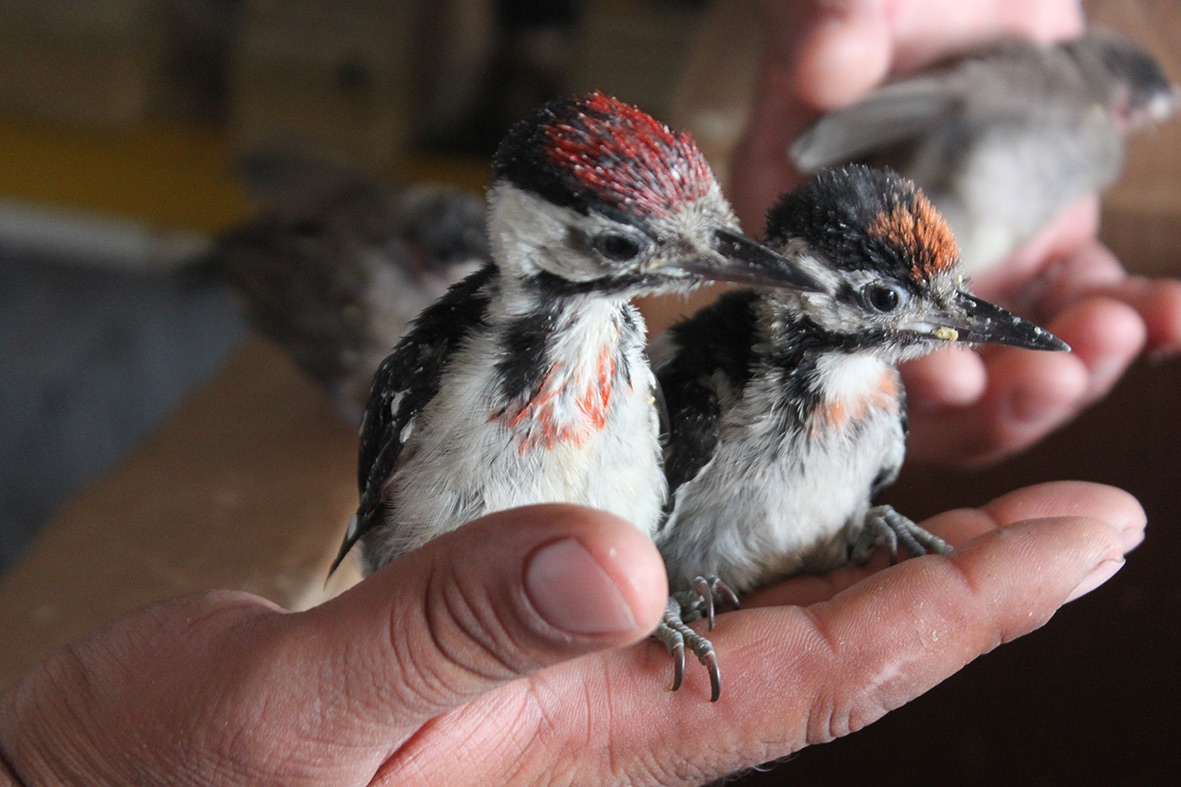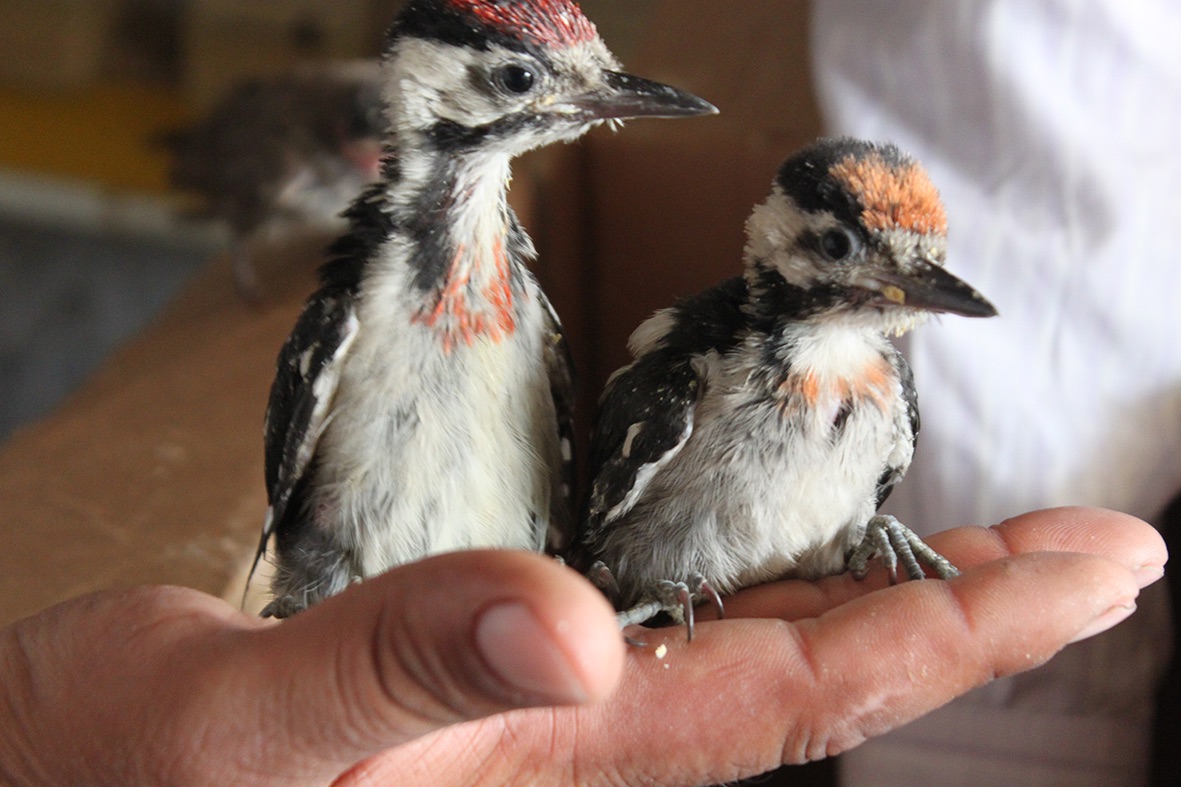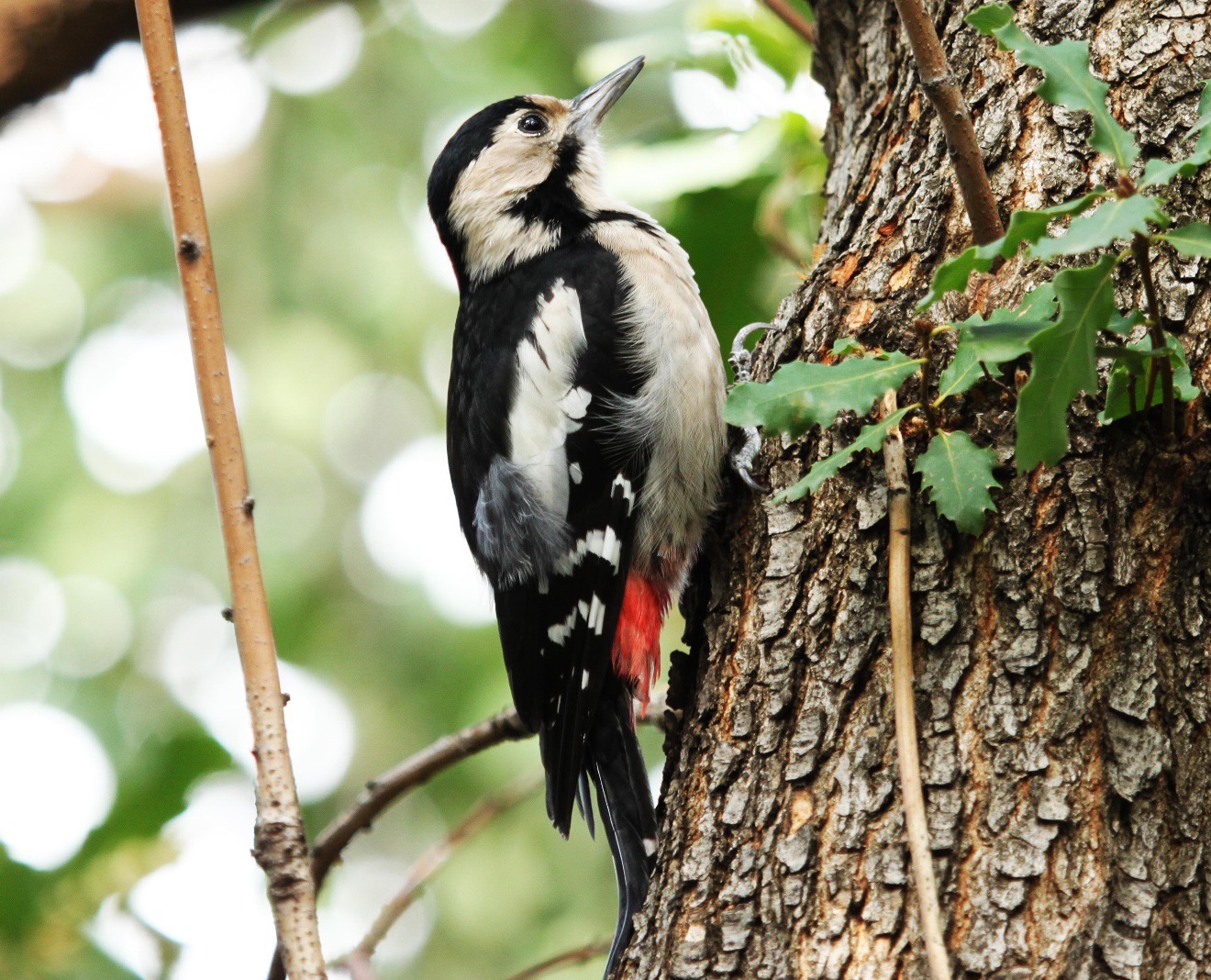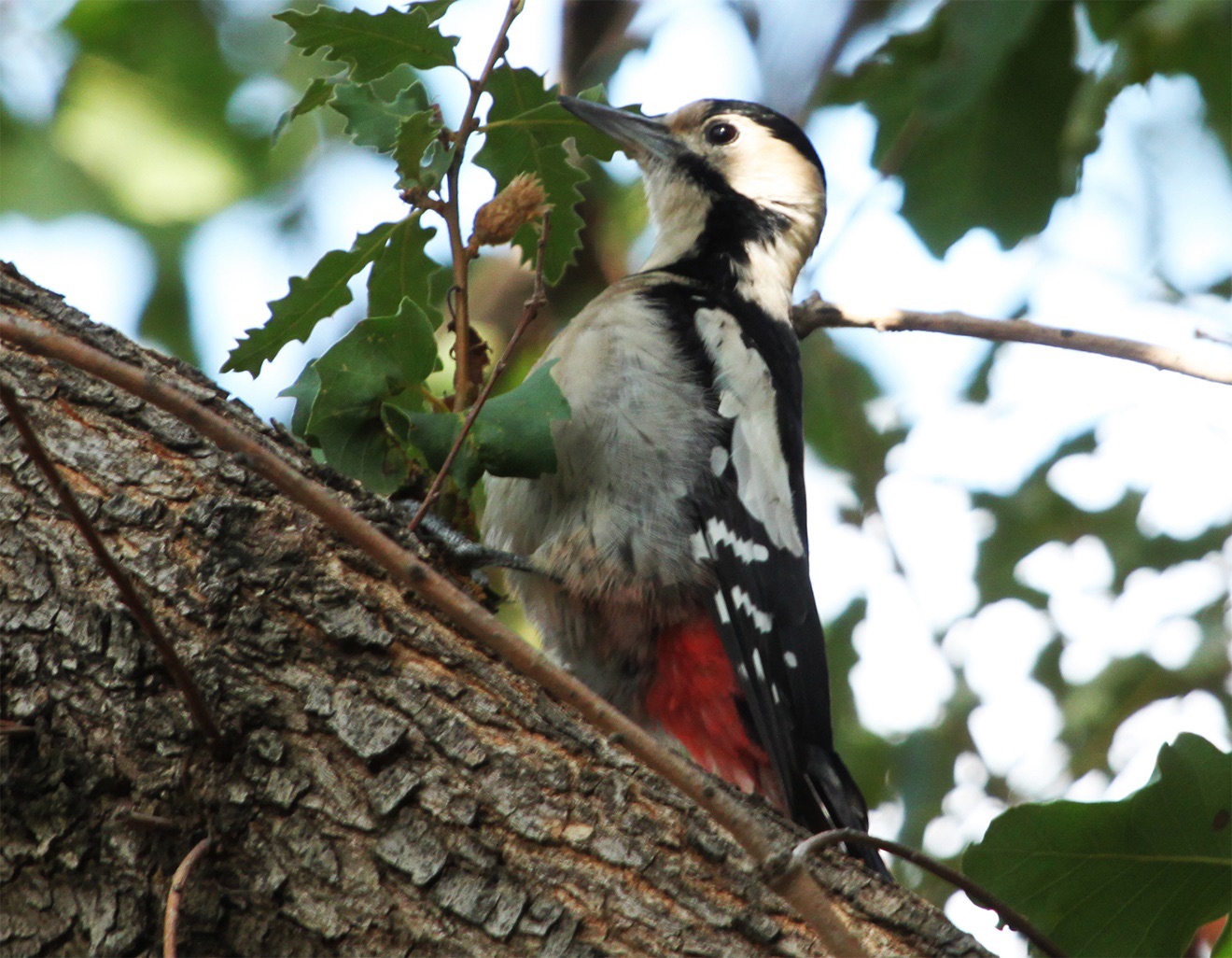
Hand rearing and releasing of Syrian Woodpecker, a first rehabilitation model of its kind in Lebanon
By Ghassan Rmadan-Jaradi & Assad Serhal
Phenological Status in Lebanon
The Syrian Woodpecker Dendrocopus syriacus was considered extirpated in Lebanon by Tohmé & Neuschwander (1974) but breeding was later confirmed in 1995 at Qammouha and Fneideq (Ramadan-Jaradi & Ramadan-Jaradi 1997). Between 1996 and 2005, this species was found nesting in hills at Hermon, above Aammiq and at Qaraoun (Ramadan-Jaradi & Ramadan-Jaradi 1999). Dispersing individuals were recorded at Aammiq and the Litani River Valley. Sighted in Lebanon at Aammiq, Arz el Shouf, Bcharri, Beirut, above Deir el Ahmar, Houah, Jabal Rihane, Kousba, Litani Valley, Qammouha and Tanayel.
Conservation Status in Lebanon
During 2008-2017, the Syrian Woodpecker showed a tangible decline in its numbers through drop of frequency of appearance in its known habitats, mainly on the eastern slopes of Mount Lebanon, by 17.8% and the species became classified Near Threatened on the National Red List (G. Ramadan-Jaradi in prep.). Among the reasons for its decline, illegal hunting, persecution despite its zero impact on bees, human disturbance and wood cutting are the main ones. Very recently, taking chicks from nests to sell them in pet shops is an additional reason behind the species recent rarefication


Photos: ©Ghassan Ramadan Jaradi
The Syrian Woodpecker
In spite of its colorful plumage, the Syrian Woodpecker is inconspicuous and could be easily overlooked in its woody habitat. Its length is 23 cm and weight is c.69 grs. Unmistakable because it is the only woodpecker species in the country. The male has a red patch on nape, the female has a black crown and nape and the juvenile has red crown bordered black. The Syrian woodpecker’s presence is often advertised by the mechanical drumming, a vibrating rattle, produced by the rapidly repeated blows of its strong bill upon a trunk or branch. It is audible from a great distance, depending on the wind and the condition of the wood, and a hollow bough naturally produces a louder note than living wood. It nests in holes excavated in trees.
The starting point
One of us GRJ is not only a professional ornithologist but also an aviculturist. He discovered that woman is the best person to care for baby animals, including birds. He entrusted this matter to his wife, who raised the young of many species at home and it was a great success, and so did another lady, Mrs “Um Hady” when in the spring 2017, she took care of three fledgling Syrian Woodpeckers through feeding them at intervals of 3 hours during days and nights until they fully grew up. First Um Hady prepared herself with the correct equipment, feeding tool, time, money and commitment. In fact hand rearing the woodpeckers is a challenging task that was not taken lightly as Um Hady was caring for them whenever they call her at day and at night, Hady said. In the beginning they were fed every 20 minutes from 7 AM to 11 PM. Later on the feeding became upon request from chicks or at wider interval of times. A bulb was also giving them the needed heat at night. If they feel themselves over heated they go away from the bulb (heat lamp) and if they feel cold they sit under the bulb, but in the beginning, when they were not able to move away from the source of heat, Um Hady was stabilizing the temperature in order to get the birds to the right temperature. This was crucial to not expose the birds to a high temperature that may cause them dehydration. To keep their box healthy, Um Hady was regularly cleaning it by removing any fecal material and by changing bedding regularly. She also cared for them by aerating their box from time to time through putting them outside the house and under the sun.
The role of the SPNL
The Society for the Protection of Nature in Lebanon highly appreciated what was done by Hady’s mom and decided to promote the conservation of the Syrian Woodpecker in Lebanon starting with an unmatched initiative in the country, consisting of releasing the male and two females woodpeckers in a huge Hima habitat where their protection from hunters and persecutors is secured. In order to give the releasing event the deserved national weight, SPNL approached Mrs. Claudine Aoun Roukoz, special presidential advisor on the environment, to accept the invitation of SPNL to sponsor the celebration and release the three woodpeckers in Bioland/ Batroun. Mrs. Claudine welcomed the initiative of SPNL and released the birds in August 2017.


Photos: ©Ghassan Ramadan Jaradi
Monitoring and recommendations
Immediately after releasing the birds, Bioland staff started monitoring them under Mr. Gilbert Khoury supervision to see how they behave, what kind of trees they prefer. The cage, in which they were kept during two weeks before their release into the natural landscape of Bioland, was left open with daily supply of food by Hassan El Sheikh. It appeared that the birds were happy in their new environ but they were returning to their cage for food but less frequently with the passing days. Accelerated drumming that was dying away at its end was helping locating them when away from the cages, Gilbert Khoury said. Thankfully, they are less imprinted than before, a matter indicating that the rehabilitation process is on its right way. It seems that the release of these resident Syrian Woodpeckers at the autumn time was well studied by SPNL because it coincides with the dispersal time of other woodpeckers from Lebanon. This coincidence will give more chance to the birds released to meet others of their kind and to attract them most likely to Bioland where they will receive the necessary protection and where the food which consists mainly of those insects which bore into the timber of forest trees is abundant; or to go with them to another suitable habitats where they can mate in the early spring 2018.
Daily monitoring at this stage should continue under the support of a research study aiming at improving the conservation of bird species through rehabilitation.